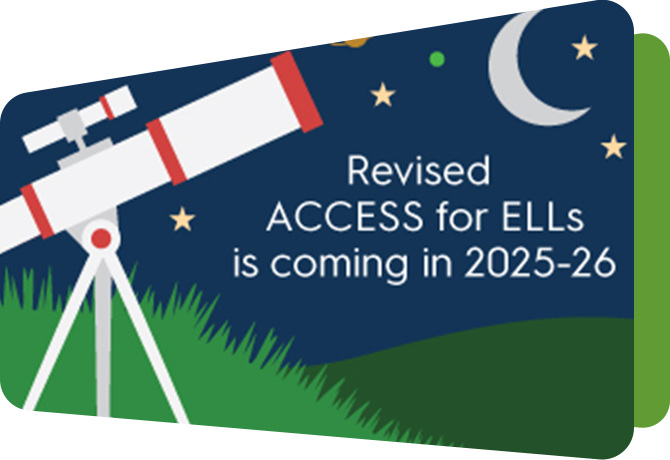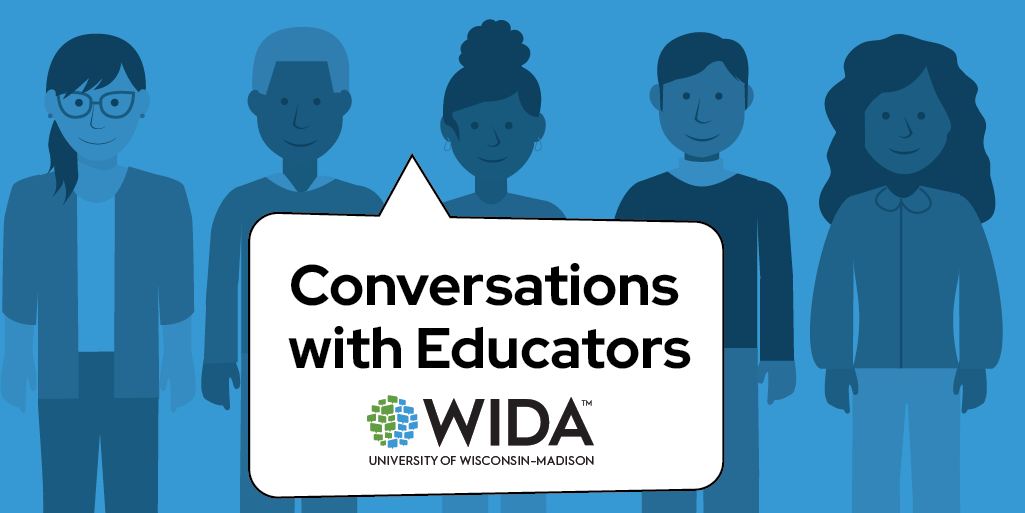Educators share how they honor students’ home languages and cultures
We asked educators at the 2024 WIDA Annual Conference how they honor their students’ home languages and cultures. Educators shared their practices, approaches and ideas. Some key themes emerged, and they’re organized into four videos. Watch the videos or read this article for the highlights.
Be Curious, Ask Questions and Do Research
I get to know them first by learning more about them. I’ve been learning more about Arabic culture. I’ve been going to the mosque, meeting with people and asking questions. I befriended some people to be able to speak Arabic with them to develop their trust and rapport. Next, I want to go to the Hindu temple.
I honor their home languages and cultures because I ask them about them. I do research, and I’m interested in who they are, their parents and the countries that they come from. That’s very important to me, especially as an African American woman and an educator. I want someone to honor me, so I want to honor them as well.
Leverage School Resources, Events and Classroom Activities
I’m really fortunate in the school that I’m in. I work in Chicago Public Schools. At my school, we only have multilingual learners (MLs) that are Spanish speakers, and I’m fully bilingual, so it’s a little bit easier to include their first language. And the majority of our staff are also bilingual, and so everything we do, we present bilingually. All of our assemblies are bilingual. And especially with Hispanic Heritage Month, it was easy for us to bring in a lot of culture. Now with Dia de los Muertos, we have ofrendas, offerings or altars to remember deceased loved ones, in the school.
One thing I do focus on a lot in my classroom is art projects. To get to know my students, but also, I think art is a great way to bring in many different cultures. They all have their own art forms, and they get to bring those into the classroom and share them with the kids. We decorate our classrooms with the art. It’s a piece of themselves they get to share with other students and with me.
I had the opportunity to build my own curriculum for ESL students. I ended up creating these literature circles where we’re reading different books told from the perspective of teenage or tween refugees from Guatemala, Syria, South Sudan and Sudan. It’s a really good opportunity for students to bring cultural knowledge.
One of the ways that my school system celebrates our multilingual learners is by doing a cultural celebration once a year. We involve the parents. We involve the community. It’s a big celebration of cultures and languages.
At one of my previous schools, we organized what we call a biliteracy night. We invited all our families from different countries who spoke more than one language. We invited them to our school. And they read books in their home languages. That experience made them feel welcomed and valued. Also, the students and families that don’t speak another language that’s not English. They were able to listen to stories in different languages. We sent a message that everyone is welcome.
Encourage Them to Use Their Language in the Classroom
In our school district, we work very hard to communicate with our parents that the home language and the home culture are critical strengths. We want them to maintain the language spoken in the home and also spoken beyond the home. Most of our MLs are Spanish speakers, so whenever possible, we want to empower them in using their language in the classroom. They have understandings, cultural practices in the home, maybe spiritual practices that are all related to their experience of the world, and those are critical strengths.
I honor my students’ languages and home cultures the same way I wish mine would have been honored. I’m a former newcomer, so in my experience, I love being able to speak to my peers who speak the same home language. I like to create opportunities for them to select their own groups if they’d like to be with peers who speak their own language just so they can go ahead and connect and check for clarification as they progress through the lessons.
I honor my students’ languages and cultures by letting them use it in class. On our anchor chart, we always do the Spanish word, the English word. If we have a Japanese student, they can write it in Japanese. We have an international night where we have the parents come in, bring food and celebrate. We have flags in our school that represent all the different countries that our students are from.
I try to make sure they have access to their language. Using translation, having affinity groups, having students talk in their home language and using translanguaging in their writing. Just letting them feel their language is a part of their learning experience. Allowing them to bridge between all the pieces of their identity and use both parts.
We have a tendency of thinking that we should discourage MLs from using their home languages in the classroom. I think there’s a silent period in language acquisition. Newcomers have to be encouraged to use a language as much as possible to make that transition. I allow them to speak to their peers. Sometimes I try to mimic them by learning their language. Most of my students are predominately Hispanic, so they speak Spanish. I learned Spanish through interacting with them. It empowers them to know that I make mistakes, so they can also make mistakes in the language if they want.
Build Relationships With Them
At the beginning of the year, we start with a home visit, and we try to visit as many families as we can. In that time, we seek to learn as much as we can about the students and about their families. There’s a lot of sharing during those meetings about the value of their language and the value of their culture and their religious background that we learn and we carry forward through the year.
I’m a multilingual learner, and English is not my first language, so I feel I connect with my students who come in knowing a plethora of languages. So, just giving them the space to share their stories in whatever way or form. It could be a drawing. It could be something in their language. I read an article about research that looked at how the brain works. Even if you don’t know a language, if you acknowledge it and nod, or even if you answer back in English, then the student knows that you are acknowledging and recognizing them for their language and their identity, and it makes a positive change in their brain.
I make an effort to honor students’ cultures by collaborating with their families within our community. Making sure the families and the students have a voice in that. Making sure their input is heard when we’re creating these family engagement events. I make sure that these events are really about what students need and what they want.
Thank you to all the educators who provided their perspectives. Keep an eye out for the Conversations With Educators station at the 2025 WIDA Annual Conference!





